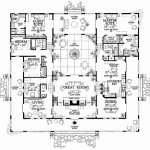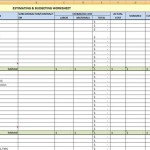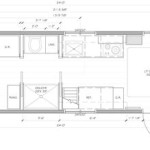Creating a detailed house electrical plan is an essential part of any home building or remodeling project. It is the best way to ensure that all of the wiring and devices are correctly installed and in compliance with local safety regulations. In this article, we will discuss the steps involved in creating a house electrical plan.
Step 1: Inspect Your Home’s Wiring
The first step in creating a house electrical plan is to inspect the existing wiring in your home. This will allow you to identify any potential problems that may need to be addressed. You should also take note of any existing outlets and switches, as these will need to be included in your plan. If you are unsure about the condition of the wiring, it is best to consult a qualified electrician for advice.
Step 2: Draw a Floor Plan
Once you have inspected the wiring in your home, the next step is to draw a floor plan. This should include all of the rooms in your home, as well as any exterior areas that will need to be wired. Be sure to measure the distance between outlets and switches, as this will help you plan where to run the wiring. It is also important to keep in mind the number of devices that will need to be connected to each outlet or switch.
Step 3: Plan Your Wiring Layout
Once you have drawn a floor plan, you can begin to plan where to run the wiring. It is important to keep in mind the local safety regulations, as these will govern the type of wiring you can use and the distance between outlets and switches. You should also consider the type of devices that will be connected to each outlet or switch, as this will affect the type of wiring needed.
Step 4: Install the Wiring and Devices
Once you have planned your wiring layout, you can begin to install the wiring and devices. It is important to follow all safety regulations when working with electricity. It is also important to use the correct tools and materials for the job. If you are unsure about any part of the installation, it is best to consult a qualified electrician for advice.
Step 5: Test the System
Once all of the wiring and devices have been installed, it is important to test the system before turning it on. This will help to ensure that all of the connections are secure and that any potential problems are identified and fixed. If any problems are found, it is important to contact a qualified electrician for advice.
Conclusion
Creating a house electrical plan is an important part of any home building or remodeling project. By following the steps outlined in this article, you will be able to create a detailed plan that complies with local safety regulations and ensures that all of the wiring and devices are correctly installed.














Related Posts








